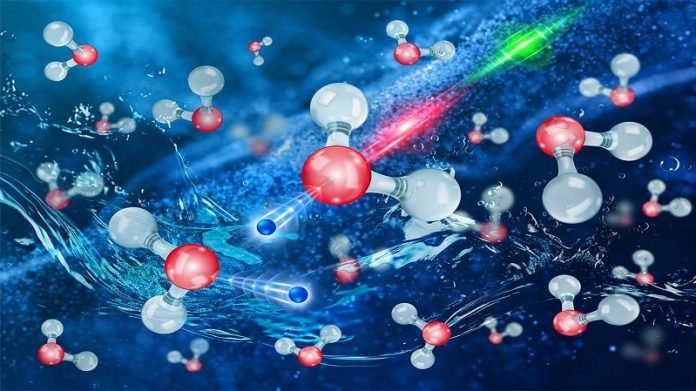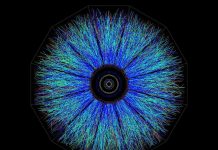
A research team got the first peek of the real-time motion of electrons in liquid water while the rest of the world stood still.
In an experiment akin to stop-motion photography, scientists have isolated the energetic movement of an electron while “freezing” the motion of the much larger atom it orbits in a sample of liquid water.
The findings, reported Feb. 15 in the journal Science, provide a new window into the electronic structure of molecules in the liquid phase on the timescale previously unattainable with X-rays.
The new technique reveals the immediate electronic response when a target is hit with an X-ray, an important step in understanding the effects of radiation exposure on objects and people.
“The chemical reactions induced by radiation that we want to study are the result of the electronic response of the target that happens on the attosecond timescale,” said Linda Young, a senior author of the research who is a professor of physics at the University of Chicago and a Distinguished Fellow at Argonne National Laboratory.
“Until now radiation chemists could only resolve events at the picosecond timescale, a million times slower than an attosecond,” she said.
“It’s kind of like saying ‘I was born and then I died.’ You’d like to know what happens in between. That’s what we are now able to do.”
From the Nobel Prize to the field
Subatomic particles move so fast that capturing their actions requires a probe capable of measuring time in attoseconds—a timeframe so small that there are more attoseconds in a second than there have been seconds in the history of the universe.
The current investigation builds upon the new science of attosecond physics, recognized with the 2023 Nobel Prize in physics. Attosecond X-ray pulses are available only in a handful of specialized facilities worldwide. This research team conducted their experimental work at the Linac Coherent Light Source, located at SLAC National Accelerator Laboratory, where the local team pioneered the development of attosecond X-ray free-electron lasers.
The technique developed in this study, known as all X-ray attosecond transient absorption spectroscopy in liquids, allowed them to “watch” electrons energized by X-rays as they move into an excited state, all before the bulkier atomic nucleus has time to move. They chose liquid water as their test case for an experiment.
“We now have a tool where, in principle, you can follow the movement of electrons and see newly ionized molecules as they’re formed in real time,” said Young.
These newly reported findings resolve a long-standing scientific debate about whether X-ray signals seen in previous experiments are the result of different structural shapes, or “motifs,” of water, or hydrogen atom dynamics.
These experiments demonstrate conclusively that those signals are not evidence for two structural motifs in ambient liquid water.
“Basically, what people were seeing in previous experiments was the blur caused by moving hydrogen atoms,” Young said. “We were able to eliminate that movement by doing all of our recording before the atoms had time to move.”
The researchers envision the current study as the beginning of a whole new direction for attosecond science.
Working on the time scales where the action happens will allow the research team to understand complex radiation-induced chemistry more deeply. Indeed, these researchers initially came together to develop the tools needed to understand the effect of prolonged exposure to ionizing radiation on the chemicals found in nuclear waste.
“The methodology we developed permits the study of the origin and evolution of reactive species produced by radiation-induced processes, such as encountered in space travel, cancer treatments, nuclear reactors and legacy waste,” Young said.
The study also included scientists from Pacific Northwest National Laboratory, the University of Washington, Deutsches Elektronen-Synchrotron DESY, and Universität Hamburg.
Source: University of Chicago.



